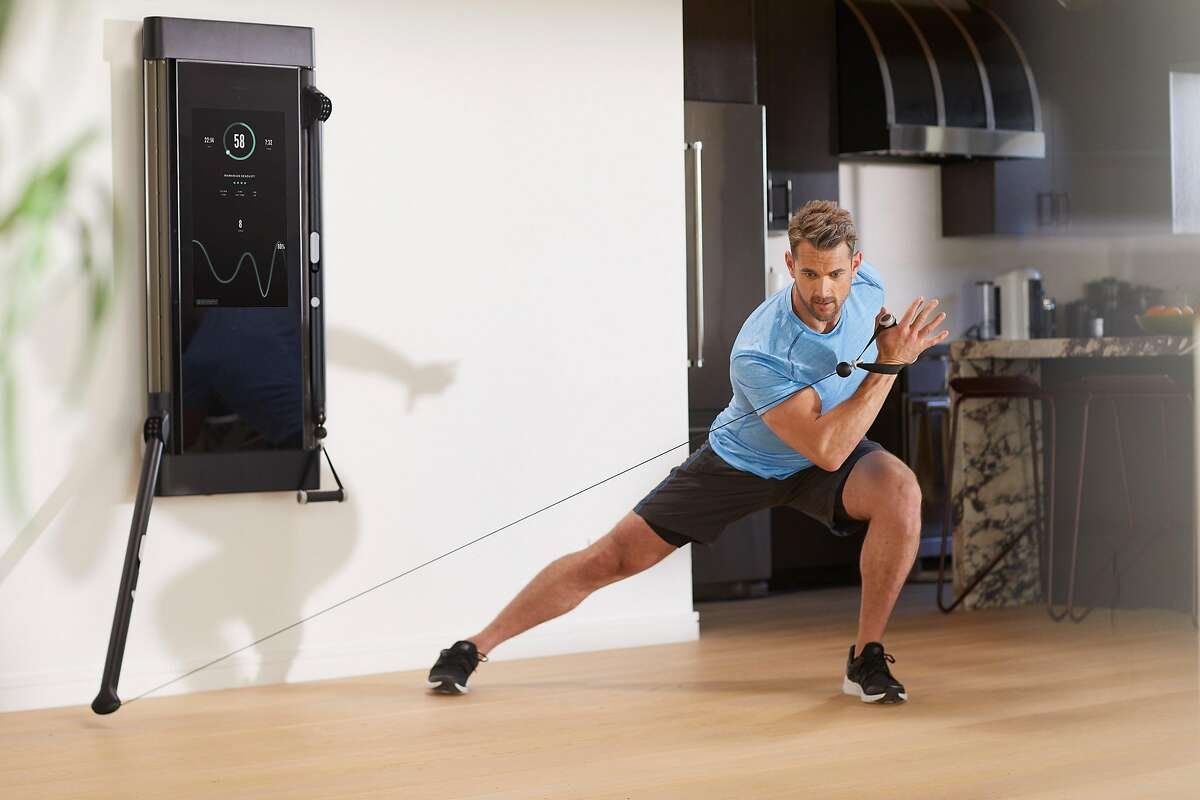Are ‘digital weights’ the key to your best body?
View original article on the San Francisco Chronicle
On a typical afternoon inside a sunny Union Street showroom in San Francisco, people of all fitness levels can be found experimenting with a newly launched piece of workout equipment. It’s mounted on a wall like a flat-screen TV turned on its side, but it’s not entertainment. It’s high-tech enough to function as both strength-training machine and personal trainer, yet sleek enough to fit inside a city apartment. It’s called Tonal and it’s promising a pathway to a stronger, healthier body.
Former Hewlett-Packard supercomputer engineer and entrepreneur Aly Orady founded Tonal to streamline the process of getting in shape after his own experience losing weight, during which he learned the necessity and efficacy of strength training — and the time suck of having to go somewhere to do it. He describes Tonal as a “Swiss Army knife of fitness” because it’s equipped with all the tools you need to achieve myriad fitness goals from the comfort of your home.
The secret weapon is “digital weights,” a technology Orady invented that uses electromagnetics to create 5 to 200 pounds of adaptive resistance without the bulky metal plates that dominate weight rooms.
The digital weights connect to Tonal’s algorithms that then adjust settings to an individual user and offer workout suggestions accordingly. Orady partnered with eight personal trainers to produce a constantly updating series of interactive fitness programs that play directly on the Tonal machine and tackle fitness goals from weight loss to triathlon training. It is these training programs, Orady says, that elevate Tonal from something “that would’ve been just a generic tool and turn it into something that allows people to achieve particular goals and get particular results.”
Tonal beta user Mike Fodor says the coaching programs allowed him to advance his training from simply doing “whatever felt right” in the weight room to adopting a sophisticated workout strategy.
“I can tell that I’m increasing lean muscle strength because I’ve been able to track my performance and have increased resistance levels for each exercise movement,” he says. “My flexibility and ability to balance have both improved.” And instead of having to wake up at 5 a.m. to head to the gym, Fodor now has time to enjoy a cup of coffee and walk around the block with his dog before heading to his garage, where his Tonal is mounted, to work out.
At $2,995 for the machine and $495 for its accompanying accessories, plus a $49-per-month subscription for access to program content and data, Tonal has a much higher cost of entry than a gym membership.



